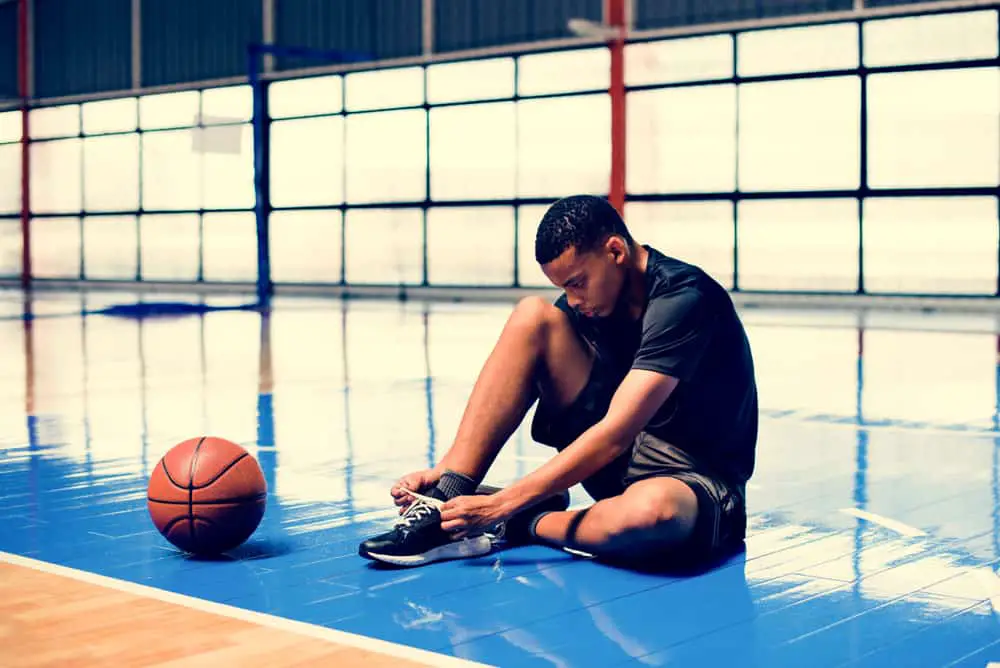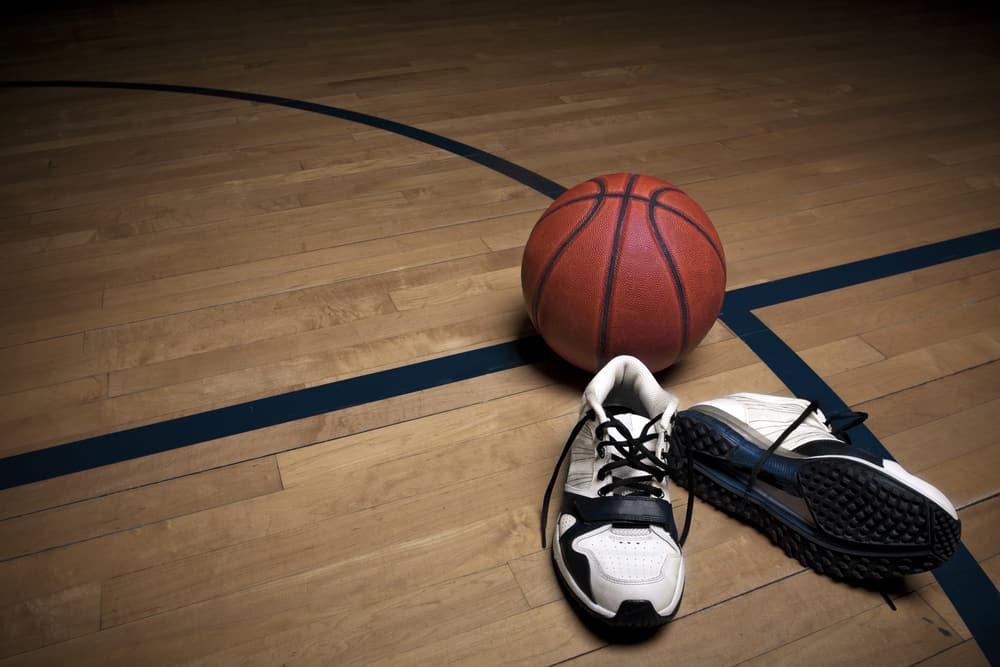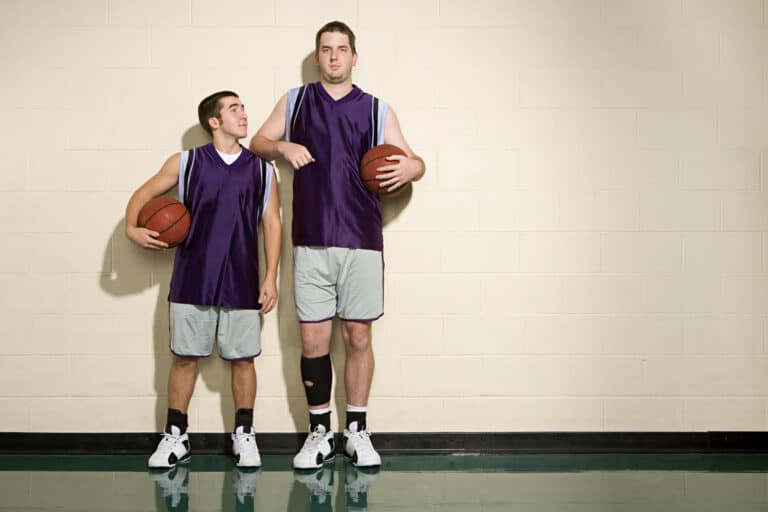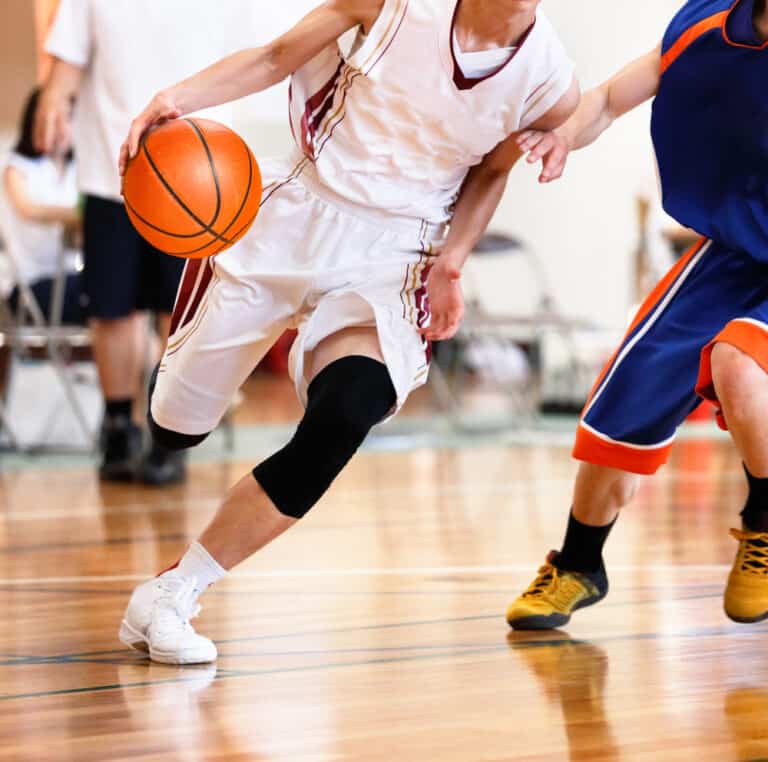Why Do Basketball Players Take Insoles Out? (Here’s The Truth)
When watching basketball, fans often remark how wide the range of shoes is. And star players seemingly each wear a different type. Professional players can often also be seen removing the insoles from their boots, which may confuse fans and amateur players. For a better understanding of why players remove their insoles, consider their effects on the game and the advice of medical experts.
Basketball players often remove the insoles from their shoes to replace them with custom orthotics which help them prevent injury and maintain a high level of performance. They will keep these new insoles when they swap out shoes again, as they are expensive and cumbersome to produce.
Professional basketball players rely on the knowledge of medical experts to help them decide which shoes they should use. There are different types of insoles, which will depend on the task they are used for and will determine how suited they are to playing basketball. So, what should you consider when you want to improve your footwear while shooting hoops?
Reasons Basketball Players Often Take Their Insoles Out
Basketball players usually remove the insoles that come with a new pair of shoes to replace them with their prescription insoles or orthotics. When they inevitably replace their shoes, they will remove their orthotics again to keep them and avoid waiting for them to be remade.
The default insoles from shoes and sneakers are not intended for the demands of professional athletes, such as basketball players. Basketball players require prescription orthotics to assist them with specific movements, balance, and performance. These custom orthotic soles are based on each athlete’s needs and foot structure. They aim to help improve their longevity and decrease the odds of injury.
Many basketball players also swap out their shoes for a new pair every other game. They want to ensure that they have the best gear available to them that they can get for every game. If the players feel that their shoes have been worn out, they might give away their old pair but retain their custom orthotics which are expensive and take a long time to design.
As basketball shoes often come with a hefty price tag, many people see fit to pass them on to others so that they may benefit from proper shoes. If someone else is going to wear the same pair of shoes, basketball players may also remove the insoles to assist with hygiene. Insoles come in close contact with a player’s feet. They can accumulate significant amounts of sweat and develop odors over time.
Different Types Of Insoles For Basketball Shoes
Insoles typically come in two variations- comfort insoles and support insoles. These are respectively aimed at improving the wearer’s comfort or assisting with structural support to achieve maximum performance and prevent injury to basketball players.
Comfort insoles are specifically made for people who spend prolonged periods on their feet and may develop strain and exhaustion. These insoles are softer, help with shock absorption, and may work as cheap alternatives for amateur basketball players or all-around activities. Still, they may not prevent discomfort and injury from medical issues or poor form.
Typically support insoles (sometimes referred to as orthotics) are more rigid and intended to improve stability and support the physical structure of the feet. Support insoles are customized to suit the wearer’s needs based on carefully considering the individual’s foot structure, medical history, and movement tendencies.
The amount of time basketball players, or people in general, spend on their feet may not be as significant for their odds of picking up injuries and strains as the shape and function of the shoes they wear. Incorrectly shaped shoes offer less support and may worsen bad posture and balance issues when performance and function are the names of the game.
Why Are Shoes And Orthotics So Important In Basketball?
Basketball players rely heavily on their shoes on the court, as the shoes they wear will help them build up momentum and prevent them from slipping. Moreover, the shoes they wear are the only pieces of equipment that players have available to help them reduce the impact and stress from regular jumping on their feet. Hence, their influence on performance is additionally significant.
Improper shoe design can cause aching feet and increase the injury rate due to insufficient support and poor shape. When the stress basketball players put on their feet when they run isn’t properly absorbed, they risk causing injuries to other parts of their bodies. Bad posture and back pain from inadequate shoes may also result from the wrong shoes.
Custom-made insoles and orthotics increase the comfort of basketball players on the court and reduce the chances of the foot, leg, and knee injuries during a game. The correct shoes and purposely made insoles will help players feel more confident and comfortable on the court and help with their maneuverability, speed, and ability to leap on the court so they can obtain more height.

What Should You Look For In Insoles For Basketball?
Proper footwear when you play basketball must withstand the demands of constantly throwing around your weight and sudden changes in direction. Add to that the players need assistance when they leap and land, and you will conclude that the shoes need to be both sturdy and flexible. Since no boots will ever be perfect for a wide range of actions, insoles can help bridge the performance gap.
To fit the correct orthotic insoles, professional basketball players will consult specialist podiatrists to study their posture, movements, bone structure, and medical history. Appropriate insoles are then designed for each foot, molded, and created especially for that player. For the average person playing for fun, cheaper, store-bought insoles will do if they do not have specific medical complications.
When assessing which insoles will help you to perform better and stay fit while playing basketball, consider the following criteria:
- Wear properly fitting shoes, including in their width. Your insoles shouldn’t be moving around in your shoes, or their effects will be diminished from constantly shifting your body weight around.
- Use sufficient padding to soften the step of the shoe and relieve pressure.
- Insoles should match the shape of your foot. The weight on your feet must be evenly distributed and your arches supported as much as possible.
- The best insoles are durable and flexible but have deep soft heels for shock absorption.
- Proper insoles should be comfortable and prevent blisters.
- Good insoles will help reduce damage to your basketball shoes so that you won’t need to replace your boots as often. Proper cushioning will help shield the heels and soles of your shoes from excessive friction.
Conclusion
Basketball players, particularly at the higher levels, will remove the insoles from their basketball shoes so that they can replace them with custom insoles. When they exchange their shoes for a new pair, they will remove these insoles again to use them with the next pair and help prevent injury and enhance their performance.
References
- https://www.liveabout.com/what-are-shoe-insoles-2987682
- https://www.quora.com/Why-do-basketball-players-take-the-insoles-out-of-their-shoes-before-giving-them-away
- https://thesportsdaily.com/news/play-and-stay-safe-the-importance-of-good-playing-shoes-in-basketball/
- https://weartesters.com/best-insoles-for-basketball/
- https://www.webmd.com/pain-management/what-are-shoe-orthotics







